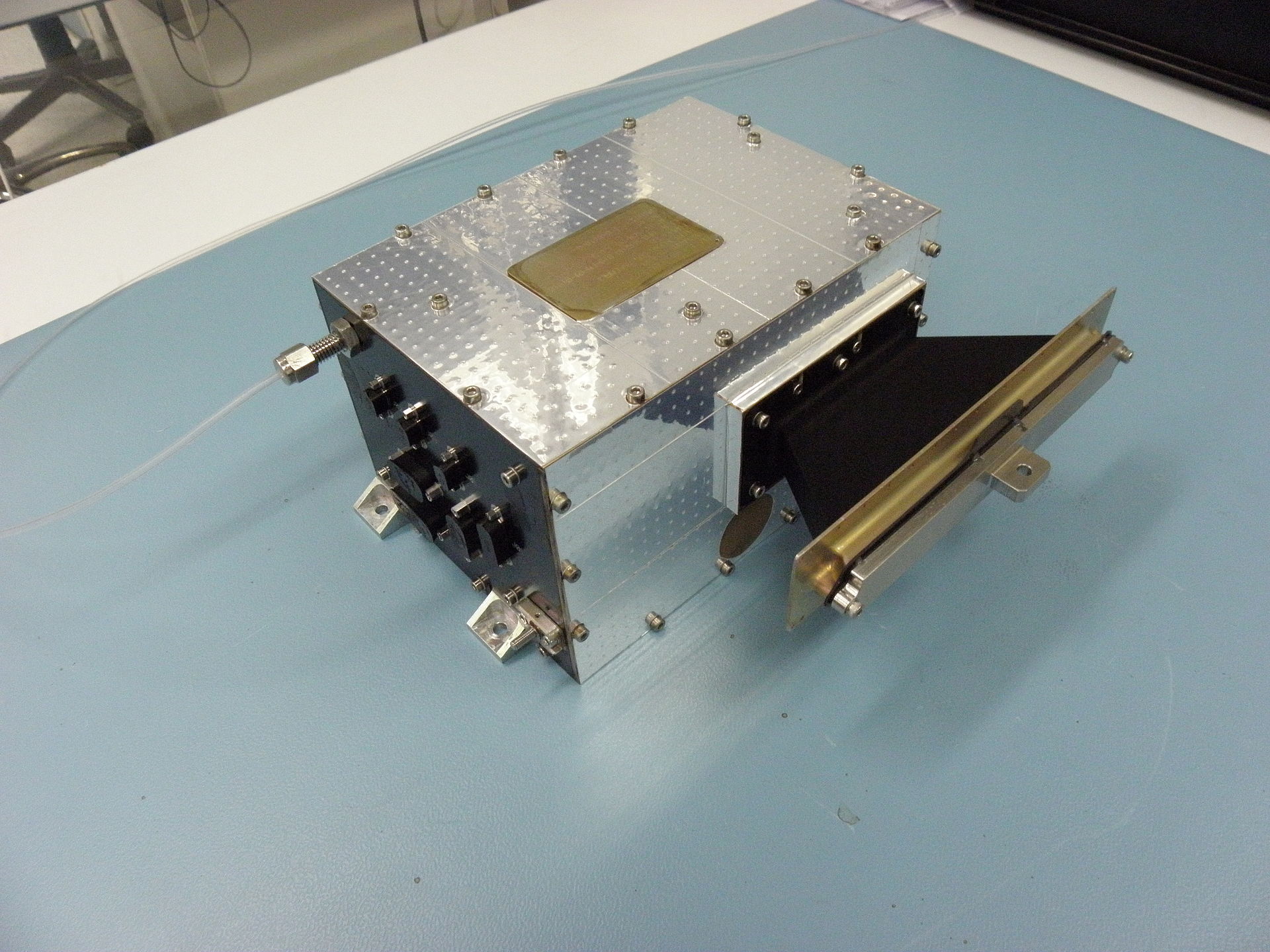
Bremen, October 22, 2018. On October 20th at 3.45 a.m. (CEST), the BepiColombo mission from the European Space Agency was successfully launched from spaceport Kourou, French Guyana, with an Ariane 5 vehicle. BepiColombo is the first European mission to Mercury, which will provide measurements to allow unprecedented studies of composition, origin and dynamics of Mercury’s exosphere and polar deposits as well as of the structure and dynamics of Mercury’s magnetosphere. BepiColombo is scheduled to gather data once it will have arrived at Mercury in 2025. OHB Italia, a subsidiary of the Bremen-based aerospace and technology group OHB SE, played a substantial role in design and manufacture of SERENA (Search for Exosphere Refilling and Emitted Neutral Abundances), one of 16 scientific instruments mounted on-board BepiColombo, in collaboration with the Italian Space Agency and the Institute for Space Astrophysics and Planetology (IAPS).
SERENA & ELENA: From Italy to Mercury
The OHB Italia instrument SERENA is an experiment composed by four sensors devoted to the detection of neutral and ionized particles in the Hermean environment. "With a major part in the important instrument SERENA, OHB Italia confirms its role as provider for complex space-systems,” said Roberto Aceti, Managing Director of OHB Italia, and added, “We are delighted to contribute to the BepiColombo mission. The scientific information and accurate measurements that will be provided by this instrument will lead to a better understanding of the environment and evolution of Mercury."
In the frame of SERENA, OHB Italia had been awarded a Prime Contractor role with ASI, the Italian Space Agency, and was responsible for the whole SERENA instruments suite integration and testing. Moreover, OHB Italia, in collaboration with AMDL, has designed and manufactured the ELENA sensor as well as the SERENA SCU (Sensor Control Unit), heart of the SERENA suite, which controls and manages data to and from all the other instruments.
Scientific objectives of SERENA
SERENA addresses some of the main scientific objectives of the BepiColombo mission:
- Exosphere composition and spatial distribution and dynamics
- Search for exo-ionosphere and its relation with neutral atmosphere
- Surface release processes
- Atmosphere/magnetosphere exchange and transport processes
- Escape, source/sink balance, geochemical cycles.
The accomplishment of these goals is crucial for a better understanding of the environment and the evolution of Mercury. To characterize Mercury’s environment, neutral particles and ions must be detected. The energy spectrum of neutral particles ranges from fractions of eV up to tens of keV. This means measuring energetic particles escaping from the planet.
Modular approach, simultaneous operation
Such a large energy interval cannot be covered by a single sensor. The SERENA instrument is therefore based on a modular approach:
•the STROFIO (Start from a Rotating Field mass spectrometer) sensor measures the in-situ neutral particle composition at the lowest energy range (~0 to a few eV), and the particle density in the exosphere
•the ELENA (Emitted Low Energy Neutral Atoms) sensor covers the 10 eV – 5 keV energy spectrum
•the MIPA (Miniature Ion Precipitation Analyzer) sensor detects ions in the solar wind the PICAM (Planetary Ion Camera) sensor is optimized to measure low-density ions circulating in the planet environment.
The fact that the sensors can be operated simultaneously has the potential to greatly improve the success of scientific objectives and allows for additional scientific objectives. “Here at OHB Italia, we are all very happy about the smooth launch with SERENA and ELENA on board. For the next few years, however, BepiColombo will be traveling to its destined place of work near Mercury – so we must wait quite a while until our contributions can fulfill their part of the mission,” said Fabio Tominetti, project manager at OHB Italia.
OHB System AG is also "on board"
With BepiColombo, another instrument OHB contribution travels into space: the German subsidiary OHB System AG was the industrial prime contractor for the spectrometer MERTIS (Mercury Radiometer and Thermal Infrared Spectrometer) of the German Aerospace Center (DLR). The spectrometer is designed to map the surface of the planet Mercury in terms of its mineralogical composition at high spatial resolution in the infrared range.
Contact for media representatives:
Marianne Radel
Head of Corporate Communications
Phone: +49 421 2020 9159
Email: marianne.radel@ohb.de
Contact for investors and analysts:
Marcel Dietz
Investor Relations
Phone: +49 421 2020 6426
Email: ir@ohb.de
